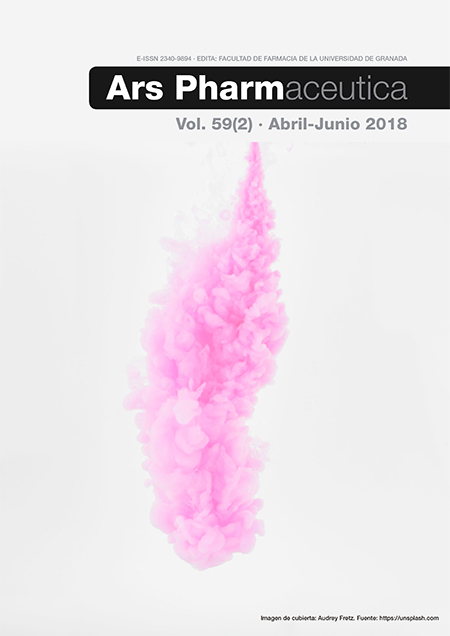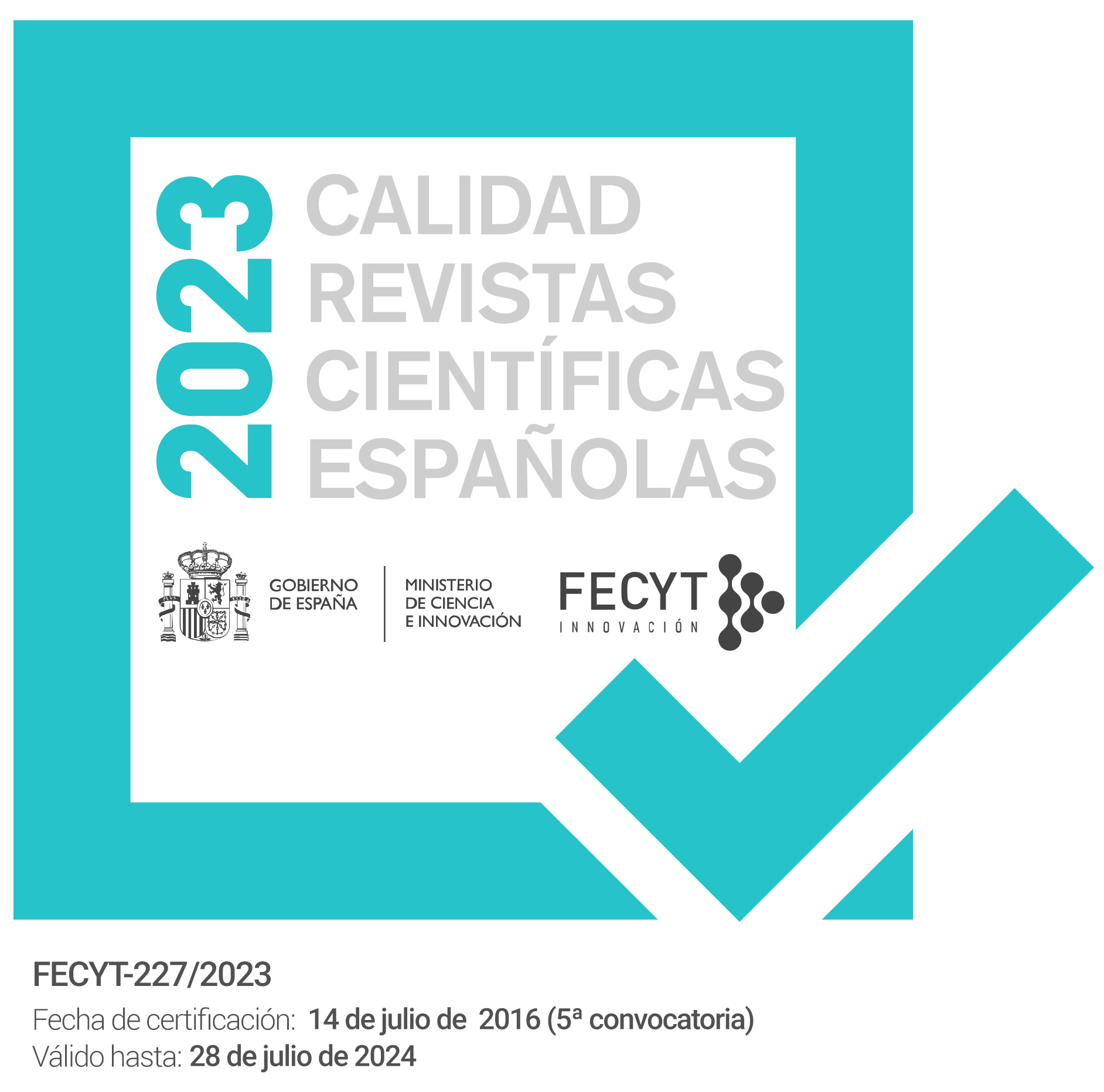Ácido glicirrícico: extracción, cribado y evaluación de la propiedad anti-inflamatoria
Palabras clave:
ácido glicirrícico, raíces de regaliz, actividad antiinflamatoria, técnica de desnaturalización de la albúminaResumen
Objetivo: El ácido glicirrícico es un componente medicinal ampliamente utilizado como agente antiinflamatorio, agente antiulceroso, agente antialérgico y agente anti-psoriásico. La presente investigación trata de la extracción de ácido glicirrícico a partir de raíces de regaliz y la evaluación de su actividad antiinflamatoria in vitro.
Métodos: el ácido glicirrícico fue extraído usando el procedimiento de la maceración. El extracto fue evaluado por su propiedad fisicoquímica, pruebas bioquímicas y propiedades fitoquímicas. La actividad antiinflamatoria in vitro fue evaluada por la técnica de desnaturalización de albúmina
Resultados: los resultados demostraron que el valor de la ceniza y los valores extractivos para el extracto se encontraron en el valor límite según lo dado por la farmacopea de Ayurveda de la India. La presencia de flavonoides, de saponinas y de triterpenoides fue identificada en el extracto mediante parámetros fitoquímico. La técnica cromatográfica en capa delgada demostró un valor de retención de 0,5 centímetros. La inhibición porcentual mostró que el extracto tiene algún potencial de curación de la inflamación.
Conclusión: el ácido glicirrícico fue extraído con éxito de las raíces de regaliz. Los parámetros de evaluación mostraron la presencia de menos impureza en el extracto, con el potencial de tener propiedades antiinflamatorias.
Descargas
Citas
Deng S, May BH, Zhang AL, Lu C, Xue CCL. Topical herbal medicine combined with pharmacotherapy for psoriasis: a systematic review and meta-analysis. Archives of Dermatological Research. 2013; 305(3):179–89.
Li J, Cao H, Liu P, Cheng G, Sun M. Glycyrrhizic Acid in the Treatment of Liver Diseases: Literature Review. BioMed Research International. 2014:872139.
Darvishi B, Manoochehri S, Kamalinia G, et al.. Preparation and Antibacterial Activity Evaluation of 18-β-glycyrrhetinic Acid Loaded PLGA Nanoparticles. IJPR. 2015; 14(2):373-383.
Ram HNA, Lachake P, Kaushik U, Shreedhara CS. Formulation and evaluation of floating tablets of liquorice extract. Pharmacognosy Research. 2010; 2(5):304-308.
Račková L, Jančinová V, Petríková M, Drábiková K, Nosáľ R, Štefek M, et al.. Mechanism of anti-inflammatory action of liquorice extract and glycyrrhizin. Natural Product Research. 2007; 21(14):1234–41.
Yang R, Yuan B-C, Ma Y-S, Zhou S, Liu Y. The anti-inflammatory activity of licorice, a widely used Chinese herb. Pharmaceutical Biology. 2016; 55(1):5–18.
Zhao H, Zhao M, Wang Y, Li F, Zhang Z. Glycyrrhizic Acid Attenuates Sepsis-Induced Acute Kidney Injury by Inhibiting NF-κB Signaling Pathway. Evidence-based Complementary and Alternative Medicine : eCAM. 2016:8219287.
Wang L, Yang R, Yuan B, Liu Y, Liu C. The antiviral and antimicrobial activities of licorice, a widely-used Chinese herb. Acta Pharmaceutica Sinica B. 2015; 5(4):310-315.
Bysani S,Babu PS,Karthikeyan R. Proximate, powder microscopic, liquid chromatographic and in-vitro anti-inflammatory activity of marketed athimadhuram churnas. Journal of Medicinal Plants Studies. 2017; 5(3): 373-383.
Li J, Cao H, Liu P, Cheng G, Sun M. Glycyrrhizic Acid in the Treatment of Liver Diseases: Literature Review. BioMed Research International. 2014:872139.
The Ayurvedic Pharmacopoeia of India. Part I, vol I, 168-169.
Tian M, Yan H, Row KH. Extraction of Glycyrrhizic Acid and Glabridin from Licorice. International Journal of Molecular Sciences. 2008; 9(4):571-577.
Hemraj Vashist, Diksha Sharma. Pharmacognostical Aspects of Glycyrrhiza Glabra. Asian J Pharm Clin Res. 2013; 6(4): 55-59.
D’Sousa’ Costa CO, Ribeiro PR, Loureiro MB, Simões RC, de Castro RD, Fernandez LG. Phytochemical screening, antioxidant and antibacterial activities of extracts prepared from different tissues of Schinus terebinthifolius Raddi that occurs in the coast of Bahia, Brazil. Pharmacognosy Magazine. 2015; 11(43):607-614.
Purkait K, Das S, Maity T, Chakraborty P. Preliminary Phyto-chemical screening of Abelmoschusesculentus Linn. Journal of Biomedical and Pharmaceutical Research. 2017; 21-34.
U.S. Pharmacopoeia-National Formulary (USP 39 NF 34). Vol I, 1445-1468.
Raja MS, Khan I, Perumal P, Srikakolapu SR, Gotteti SD, Quantitative analysis of glycyrrhizic acid in crude drug and its herbal formulation by UV spectroscopy, Archives of Applied Science and Research, 2(2). 2010; 184-189.
http://www.drugfuture.com/pharmacopoeia/usp32/pub/data/v32270/usp32nf27s0_m45050.html.
Mizushima Y, Kobayashi M. Interaction of anti-inflammatory drugs with serum proteins, especially with some biologically active proteins. Journal of Pharmacy and Pharmacology. 1968; 20(3):169–73.
Hossain MS, Chowdhury MEH, Das S, Chowdhury IU. In-vitro thrombolytic and anti-inflammatory activity of Swertia chirata ethanolic extract. J. Pharmacog. And Phytochem. 2012; 1(4):99-104.
Sakat SS, Archana RJ, Gambhire MN. In vitro antioxidant and inflammatory activity of methanol extract of Oxalis corniculataLinn. Int J Pharmacy and Pharm Sci 2010; 2 Suppl 1: 146-155.
Leelaprakash G, Mohan Dass S. In-vitro anti-inflammatory activity of methanol extract of Enicostemma axillare. Int J Drug Dev Res. 2011; 3(3):189–196.
Pemiah, Brindha; Reshma, K.P, Arun. In vitro anti-inflammatory, antioxidant and nephroprotective studies on leaves of aegle marmelos and ocimum sanctum. Asian Journal of Pharmaceutical and Clinical Research. 2014; 121-129.
Chowdhury A, Azam S, Jainul MA, Faruq KO, Islam A. Antibacterial Activities and In Vitro Anti-Inflammatory (Membrane Stability) Properties of Methanolic Extracts of Gardenia coronaria Leaves. International Journal of Microbiology.2014; 1
Descargas
Publicado
Cómo citar
Número
Sección
Licencia
Los artículos que se publican en esta revista están sujetos a los siguientes términos en relación a los derechos patrimoniales o de explotación:
- Los autores/as conservarán sus derechos de autor y garantizarán a la revista el derecho de primera publicación de su obra, la cual se distribuirá con una licencia Creative Commons BY-NC-SA 4.0 que permite a terceros reutilizar la obra siempre que se indique su autor, se cite la fuente original y no se haga un uso comercial de la misma.
- Los autores/as podrán adoptar otros acuerdos de licencia no exclusiva de distribución de la versión de la obra publicada (p. ej.: depositarla en un archivo telemático institucional o publicarla en un volumen monográfico) siempre que se indique la fuente original de su publicación.
- Se permite y recomienda a los autores/as difundir su obra a través de Internet (p. ej.: en repositorios institucionales o en su página web) antes y durante el proceso de envío, lo cual puede producir intercambios interesantes y aumentar las citas de la obra publicada. (Véase El efecto del acceso abierto).




















